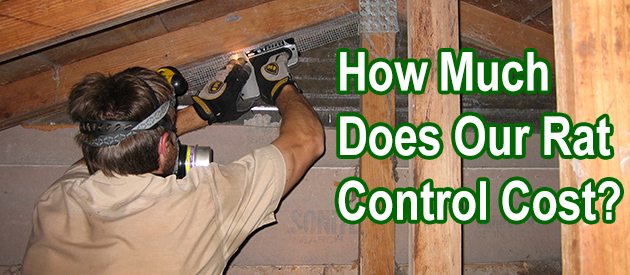New Castle County County, Wilmington Rat Control Situation:
Hi David, I rent an apartment in Wilmington DE and have consistent mouse problems. It started with a mouse in the beginning of the year- I set all types of traps (snapping, glue, poison) and it would only eat the peanut butter and not get caught. Finally it was caught, but again I have a mouse and all the different traps that are out are only feeding it. I know the only real way to stop them is to close off all points of access, but living in an old apartment building and having landlords who've stopped caring about all the mice problems makes it harder. My neighbors also have mice problems and I think they're traveling between apartments. I obviously cant secure every hole, but I can at least try with my place. Would stuffing the holes with mesh wire then covering it with caulking work? I'm not sure how to finish off the holes. Also if you have any insight on how to deal with these renter vs. landlord situations, I'm all ears. Thanks for listening, Dianna
Hello, Attached are 2 photos of what I think are from a wood rat. My family owns a large cabin in the middle of 260 wooded acres. The ground around the cabin has been cleared for years. In the past we only had mice to control, but now we have critters that we cannot control. We place rat/mice poison in 3 areas. They eat it all within 2 weeks. There is lots of poop right around the poison trays. Now the critter is eating part of the sofa and has knocked a lamp over. We have had flying squirrels and wood rats in the past. But they ate the poison and died. Not the case now. What do you suggest? We put moth balls under the cabin and the attic appears not to be an issue. We cannot find where they are coming in. VERY frustrating. Can you help?? Thank you. I have to forward the pictures from my computer.
Wilmington Rat Control Tip of The Week
Are Rats Nocturnal?
Biologically, rats are nocturnal. These animals come out at dusk to look for food and carry out other activities, then go back into hiding at dawn. Their choice of coming out at dusk is dependent on many things that have to do with their natural behavior and biology. Right here, we will be taking you through some of these factors.
The first factor is that rats are silent animals and will prefer to operate in an environment with less noise. Their involvement with humans and special liking for staying in places close to human settlements will make them want to stay in hiding during the day time because the activities of humans during the day causes noise that they can't cope with.
Another factor that modifies rats to being nocturnal is the fact that their instinct only makes it possible for them to feel relaxed and active when there is less danger. This is nearly impossible during the day time as many of their natural predators will be active during that exact time.
Third, rats like are sneaky and will always prefer to operate in hiding without the occupants of the house knowing. The night has limited light and the occupants are most likely to be at rest during this time. This gives rats all the time and opportunities they need to carry out their rat business without any form of interruption.
However, rats are also capable of moving around during the day if they have a safe route through which they can travel. The routes are usually dark and safe even during the day when there are noises and disturbances from humans.


